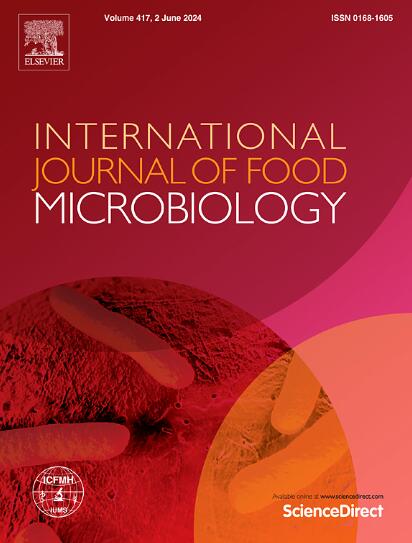Adaptive responses and molecular mechanisms of Lactiplantibacillus plantarum to citric acid stress
IF 5
1区 农林科学
Q1 FOOD SCIENCE & TECHNOLOGY
International journal of food microbiology
Pub Date : 2025-07-06
DOI:10.1016/j.ijfoodmicro.2025.111340
引用次数: 0
Abstract
Lactiplantibacillus plantarum, known for its environmental adaptability due to genetic flexibility, was subjected to 180 days of citric acid exposure (a prevalent stressor derived from plants) to understand its adaptive response to environmental stress. The evolved strain demonstrated a 2.4-fold increase in cell density under 10 g/L citric acid stress, indicating significantly improved citric acid tolerance compared to the ancestral strain. It also demonstrated cross-protection, particularly under HCl and cold temperature challenges. During early-stage adaptation, reversal mutations were observed, and most plastic changes indicated by gene expression alterations in the ancestral strain were reversed via genetic adaptation, indicating a compensatory effect of these mutations. Whole-genome sequencing identified a key mutation in the citrate transporter gene nacT (F178V). This mutation, validated through point mutation and homologous modeling, enhanced citrate transport and utilization. When applied to ferment citric acid-rich materials (green plums, lemons, passion fruits, pineapples, oranges, and white grapefruits), the evolved and point-mutated strains exhibited 3.7- and 3.4-fold higher citric acid consumption than the ancestral strain, respectively. Notably, the fruits fermented by evolved strain demonstrated significantly elevated viable cell counts, as well as a richer taste and more pleasant aroma profile based on sensory analysis. These findings advance our understanding of environmental stress adaptation and underscore the potential application of evolved strain in food fermentation.

植物乳杆菌对柠檬酸胁迫的适应反应及其分子机制
以植物乳杆菌(lactoplantibacillus plantarum)为研究对象,对植物中常见的胁迫源柠檬酸进行了180天的暴露,以了解其对环境胁迫的适应性反应。在10 g/L柠檬酸胁迫下,进化菌株的细胞密度增加了2.4倍,表明与祖先菌株相比,柠檬酸耐受性显著提高。它还显示出交叉保护,特别是在HCl和低温挑战下。在早期适应过程中,观察到反转突变,祖先菌株中基因表达改变引起的大多数可塑性变化通过遗传适应被逆转,表明这些突变具有补偿作用。全基因组测序发现了柠檬酸转运基因nacT (F178V)的一个关键突变。通过点突变和同源模型验证,该突变增强了柠檬酸盐的转运和利用。当应用于富含柠檬酸的发酵材料(青梅、柠檬、百香果、菠萝、橙子和白葡萄柚)时,进化和点突变菌株的柠檬酸消耗量分别比祖先菌株高3.7倍和3.4倍。值得注意的是,通过进化菌株发酵的果实显示出显著提高的活细胞计数,以及基于感官分析的更丰富的味道和更宜人的香气。这些发现促进了我们对环境应激适应的理解,并强调了进化菌株在食品发酵中的潜在应用。
本文章由计算机程序翻译,如有差异,请以英文原文为准。
求助全文
约1分钟内获得全文
求助全文
来源期刊
CiteScore
10.40
自引率
5.60%
发文量
322
审稿时长
65 days
期刊介绍:
The International Journal of Food Microbiology publishes papers dealing with all aspects of food microbiology. Articles must present information that is novel, has high impact and interest, and is of high scientific quality. They should provide scientific or technological advancement in the specific field of interest of the journal and enhance its strong international reputation. Preliminary or confirmatory results as well as contributions not strictly related to food microbiology will not be considered for publication.

 求助内容:
求助内容: 应助结果提醒方式:
应助结果提醒方式:


